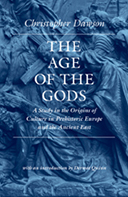This short work was first published in 1933 to coincide with the centenary of the Oxford Movement. The Oxford Movement was a peculiarly English religious movement of the 19th century which sought to re-invigorate the Church of England of the day. As depicted in Anthony Trollope’s Barchester novels, the Anglican church had become mired in conventionality and the subordination of ecclesiastical to secular power.
Central Themes
Anyone wishing to understand the differences between the various degrees of ‘high’ and ‘low’ Anglicanism, or the differences between Anglo-Catholicism and Roman Catholicism, will find this book an enlightening read, as well as a fascinating journey – a “pilgrimage” for Christopher Dawson – into a world where, unlike in our own secular age, religious passions ran high. To make this journey, Dawson, in his own words “simply tried to put myself into the skin of the Tractarians and to see things with their eyes”.
Thus, after presenting his first chapter on the Anglican tradition, he dedicates the next to the intellectual founders of the movement, Hurrell Froude and John Keble, introducing us to “the ideas that moved them and the faith that inspired their action”. Only after this introduction does he go on to discuss Newman, with whom the movement is often wholly identified today.
Later chapters include one dedicated to the famous ‘Tracts’ that gave to the adherents of the movement the name of ‘Tractarians’, and another on Newman’s theory of the Via Media and how it differs from the ‘Branch Theory’ of the High Church party of the Anglican church.
Evaluation of the Work
Although this book is of a more specialist nature than most of Dawson’s other works, it is one that can draw the general reader into this “spiritual world in which they [the Tractarians] lived” and, in Dawson’s own words, “open the shuttered windows of the human mind to the vast spiritual horizon that lay around it”.
As Christina Scott, Dawson’s daughter and biographer, pointed out, this subject was very close to the author’s heart, because he had lived through its dramas within his own family – a family that included both High Church Anglicans of the most conventional type and Anglo-Catholics – and had suffered the vehement disapproval of the former when he converted to Catholicism in 1914.



